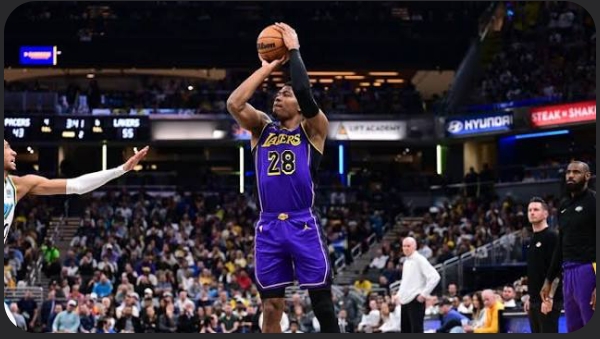Rui Hachimura recently returned after nearly a month out with patellar tendinopathy, AKA “jumpers knee.” On Wednesday, after coming off the bench his first two games, he rejoined the starting lineup against the Pacers and played a crucial role down the stretch.
Although Rui has looked expectedly rusty after his time off and continues to find his rhythm and fitness on the court, he gave some recent comments on his injury that may have given some fans pause.
“It’s like 70, 80 [percent],” Hachimura said. “My knee’s going to be like that for a while, I think. I can’t really get back to 100% right away. I got to rest for like a long time to get back to my normal…We just go to maintain and manage it.”
On the surface, that obviously sounds disconcerting, but once you understand some of the injury rehabilitation specifics, it will make sense why that is the case.
If you want a more general understanding of the injury, you can read the piece I wrote on it here.
The key thing to understand with Rui’s injury — and this really applies to all tendon management — is that tendons are very sensitive to load because of what they’re asked to do for the body and how often they’re asked to do it.
Tendons have an elasticity to them that is unique compared to other body structures because they have to stretch — elongate — which builds up energy and then releases that energy as they then shorten — compress. It’s akin to a spring-like mechanism.
Hachimura aggravated the tendon while jumping and landing on a fast break, which makes sense because the tendon similarly has to store energy while the knee bends and release energy into the jump and then, again, has to store energy upon landing.
Due to these unique demands and constant asks, in-season patellar rehab is about constantly balancing activity with rest and treatment. That management exists on a continuum.
You don’t want the tendon to get to the really angry stages of being constantly reactive. But at the same time, you also know that to properly rehab the tendon, you need a much longer rest period and methodical ramp-up that isn’t realistic during the season.
Think of this balance like pouring water into a bucket. Activity pours water into the bucket while rest — and, to some extent, treatment — takes water out of the bucket. If that bucket overflows, the tendon is overloaded and you have a major issue. If there’s space in the bucket, you have space for more activity and loading.
Rui’s initial rest period was to help reduce that overflow. Once you’re there, you have to manage the water going in and coming out.
Knowing that, Rui’s comments about being 70-80% make sense and also explain why he will likely be on a minutes restriction for the majority of the season. It truly becomes about day-to-day management to keep that patellar tendon in a space that isn’t too physically limiting while being proactive and aware of how reactive tendons can be.
It’s almost like a dance, but that grey area of management and risk/reward is the reality of rehab at the elite levels. It comes with the territory and isn’t something to be concerned about, it’s just the reality of how tendons operate.

